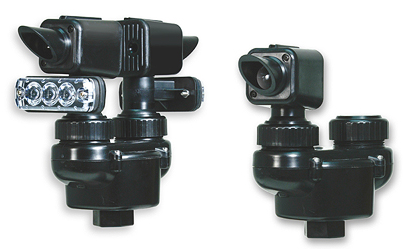Intersection Equipment- Detectors & Processors
The traffic controller then safely manipulates the traffic signals according to a preprogrammed algorithm. Depending on where the traffic controller was in its normal routine the vehicle will receive a “Green Light” after a minimum of 3 or more seconds. Traffic signals which are already green will stay green until the vehicle passes.
If multiple vehicles are being received, they are prioritized to determine which vehicle should be given the right of way. If vehicles are of equal priority, right of way is given on a first-come, first-served basis.
Optical Signal detector
The 4090 Series Optical Preemption Detectors sense the optical pulses emitted by properly equipped emergency & transit vehicles as well as hand-held strobes. We offer detectors that are to be used in conjunction with a flood-light style confirmation beacon as well as detectors with an integrated confirmation light.
Mounted to observe the approaches of an intersection, 4090 Detectors are used to inform the traffic control system of the presence of designated vehicles.
OPTICAL SIGNAL PROCESSOR
The 2 & 4 channel 4000 Series Optical Signal Processor (OSP) receives the electrical signals from the optical preemption Detectors. While being received, the signals are processed to determine if the vehicle is a valid emergency or transit vehicle.
The OSP is connected directly to the preemption inputs of the traffic controller in the intersection in which it is installed. When a vehicle’s signal is accepted as valid, the OSP sends a preemption request to the proper input of the traffic controller.



